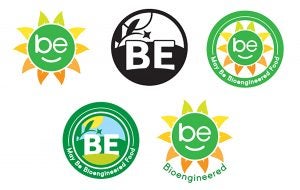The science community doesn’t use the term “GMOs,” so it makes sense that the government’s labeling system to identify foods made using genetic engineering wouldn’t either. The USDA recently offered a look at a handful of prototypes for the labeling logo, and they use the abbreviation “BE” on them — for bioengineered — a scientifically appropriate term for modern breeding techniques in agriculture.
The proposed logos, most with greens and yellows reminiscent of the growing and harvest seasons, reflect what biotechnology has meant to modern agriculture and what it means to the sustainability of the industry.

One of the most obvious takeaways from the proposed logos is the USDA’s recognition of biotechnology being a path forward for farmers. From allowing the use of safer crop protection tools and fewer applications to opening the door to the greater use of no-till and minimal-tillage production, the scientific consensus has been overwhelmingly positive about bioengineering in our nation’s food supply. That’s on top of the fact that these opportunities have led to significantly increased yields and a more secure food supply.
The logos arrive in conjunction with the USDA’s proposed rule for food labeling. According to the agency, the rule is intended to provide a mandatory uniform national standard for disclosure of information to consumers about the bioengineered status of foods. (The comment period ends July 3, 2018.)
We can expect a vast number of comments before the close of the period. In 2016, when the congressional bill that put this plan into motion was passed, there were more than 110,000 responses. But the discussion didn’t stop there, and there has been much debate in the past two years about the specifics of the how any labeling guidelines would play out. One sticking point is how labeling would be used on some highly processed foods, where the genetic material is no longer detectable.
So far, the response from neutral parties to the proposed designs has been overwhelmingly positive — any negativity has been generated primarily from anti-biotech organizations who wish the logos cast more of a black cloud over genetic engineering. For example, in an article with NPR, an activist with the anti-biotech Center for Food Safety lamented that the “smile” that appears on some of the proposed logos is too propagandist while also suggesting that using scientific terms will be confusing for consumers.
There is nothing final about the logos or the rule, and now is the opportunity for anyone vested in agriculture and our food system to weigh in (yes, that’s pretty much everyone). Due to the congressionally mandated timeline for this rulemaking, the comment period will not be extended.


